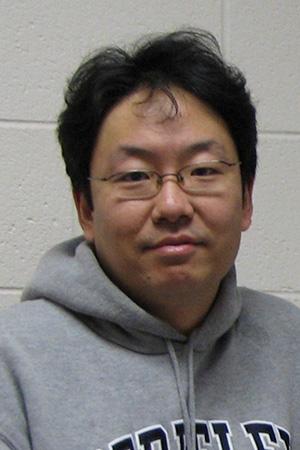
Seungyong Hahn, Associate Professor, Department of Mechanical Engineering, Florida State University and the National High Magnetic Field Laboratory
Seungyong Hahn
Associate Professor, Department of Mechanical Engineering, Florida State University
Friday, December 18, 2015
3:00pm
Abstract
First introduced in 2010, the No-Insulation (NI) high temperature superconductor (HTS) winding technique is expected to provide a practical solution for protection of HTS magnets, one of the most critical challenges in high-field (>20-T) HTS magnets. The key idea is to eliminate turn-to-turn insulation within an HTS coil and, in a quench event, current can be automatically diverted to the adjacent turns through turn-to-turn shorts. As a result, an NI magnet can be designed at a substantially higher operating current density than that of its insulated counterpart, making the magnet extremely compact, yet “self-protecting.” To date, over 100 NI HTS coils have been constructed and tested, successfully demonstrating the self-protecting feature of NI coils. In a magnet level, a total of 7 NI magnets have been designed, constructed, and tested, including the recent 26-T 35-mm all-REBCO magnet that was designed by Hahn and constructed by SuNAM; all of the NI magnets survived after multiple consecutive quenches at their nominal operating temperature ranged 4.2 – 20 K. An NI magnet, however, has a major drawback of “charging delay” due to its turn-to-turn shorts. Several variations of the NI technique, including the Partial-No-Insulation (PNI) and the Metallic-Cladding-Insulation (MCI), are recently proposed, with which 5 – 50 times reduced charging delays were reported than those of their NI counterparts. This presentation provides a summary of the recent progress in “NI-class” magnet technologies that include: 1) quench test results of two all-REBCO magnets, 26-T/35-mm and 7-T/78-mm; 2) self-protecting mechanism of NI in a magnet level as well as in a coil level; 3) potential of the NI technique for the next-generation ultra high field magnets; 4) major challenges and potential pitfalls.
Bio
Dr. Hahn is currently an Associate Professor in the Department of Mechanical Engineering, Florida State University (FSU) and the National High Magnetic Field Laboratory (NHMFL). He received his PhD in Electrical Engineering at the Seoul National University in Korea (2003). Before joined to the FSU and the NHMFL, he had worked at the MIT Francis Bitter Magnet Laboratory as a post doctor (2003-2005) and later a Research Engineer (2005-2015). His research is in the field of superconducting magnet technologies for various applications including biomedical imaging (NMR/MRI), high energy physics (fusion, accelerator), renewable energy (wind generator, high-current power cable), and transportation (MagLev). He is the inventor of the No-Insulation (NI) high temperature superconductor winding technique and has been pioneering the NI magnet researches.